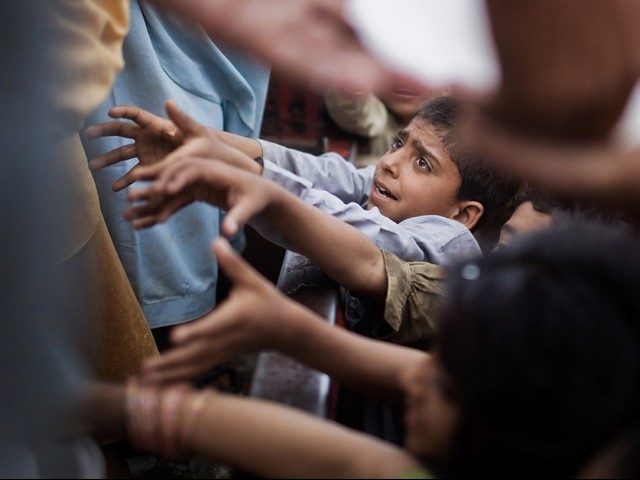
They also stressed that poverty could not be standardized in the country, even at the district level.
Stressing the need for scrutinising the indigenous context of communities, which varied across the country, they said it was essential to empower communities by way of social security and skill training.
The discussion was based around the report ‘Geography of poverty in Pakistan – 2008-9 to 2012-13: distribution, trends and explanations’. The report was jointly published by the Pakistan Poverty Alleviation Fund (PPAF) and Sustainable Development Policy Institute (SDPI).
Samia Liaquat Khan, the group head of the PPAF presented an overview of the report, highlighting its key findings.
Terming the Benazir Income Support Programme generic, she said that it was one-size-fits-all programme, adding that the PPAF was working on programmes for addressing poverty reduction.
Dr Arif Naveed, a PhD scholar and co-author of the report, said: “Poverty is not just a deprivation of monetary resources, but it is a lack of several fundamental freedoms such as freedom from hunger, premature death, illiteracy and poor living conditions.”
According to the report, the highest incidence of poverty is found in Balochistan, followed by Khyber-Pakhtunkhwa and Sindh, while the lowest poverty is found in Punjab.
In 2012-13, 62.6 percent population of Balochistan, 39. 3 percent of K-P, 37. 5 percent of Sindh and 2.43 percent of Punjab was multidimensional poor.
A total of 23 districts with nearly 30 percent population of the country had 44.7 percent of Pakistan’s total poor population. These districts are: Rahimyar Khan, Bahawalpur, Muzaffargarh, Vehari, DG Khan, Multan, Badin, Khairpur, Thatta, Rajanpur, Tharparkar, Khanewal, DI Khan, Mirpurkhas, Okara, Sanghar, Ghotki, Swat, Kashmore, Umerkot and Upper Dir.
Most of the districts with highest contribution to poverty are in southern Punjab and Sindh. As many as 11 districts of three divisions – Bahawalpur, Dera Ghazi Khan and Multan had one-quarter of Pakistan’s poor in 2012-13.
Least poor districts are mainly clustered in the north of Punjab and major urban centers in all provinces, the report adds.
Overall, the state of governance, access to public services and the quality of public services are weak in poorest districts.
The report identified that investment in education, health and social enterprises was instrumental in uplifting communities from poverty.
Published in The Express Tribune, October 7th, 2016.




































1713853507-0/MalalaHilary-(2)1713853507-0-270x192.webp)








COMMENTS
Comments are moderated and generally will be posted if they are on-topic and not abusive.
For more information, please see our Comments FAQ